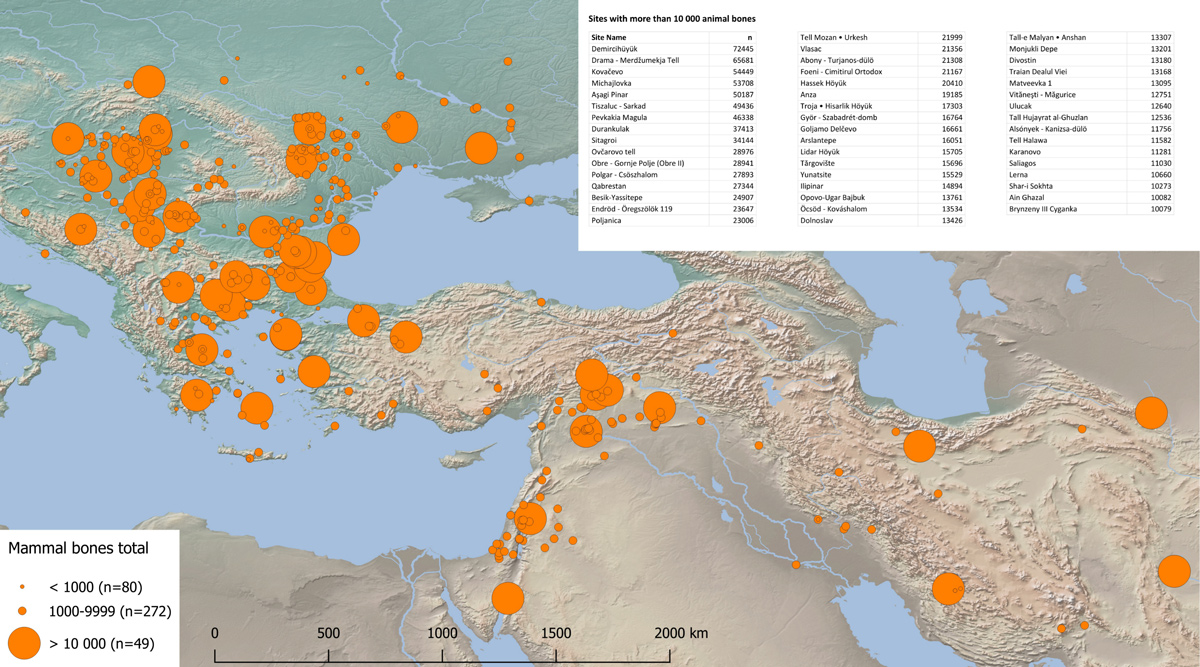This research project was devoted to the process of a major economic shift in sheep husbandry that by the end of the 4th millennium BC took place in South-West Asia. From that time onwards, sheep management was rather focused on fiber exploitation than on meat and milk, requiring the transformation of sheep with hairy coat to those with a woolly vlies.
Research

Mapping of sites with major bone assemblages from South-East Europe and South-West Asia. Time frame: 6500-1500 BC | Source: Suhrbier 2017 (click to enlarge)
Large-scale archaeozoological data may help to narrow down the beginning of this new management and its spread towards Europe, the rapidity and dimension of which still is unexplored. A range of 401 archaeological sites in South-East Europe and South-West Asia covering a timespan from 6500-1500 BC are explored as to the strategies in life-stock keeping and sheep management, carried out by their inhabitants. They yield more than 1.6 million bones from domestic ungulates. The main factors investigated are a general increase in sheep numbers, changes in slaughter profiles and sex ratios as well as modification in size.
